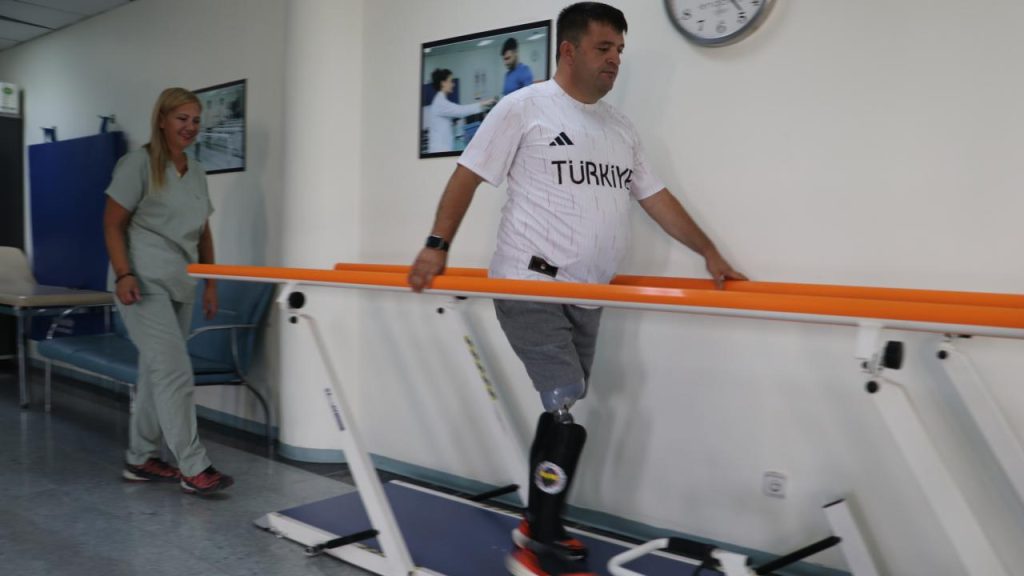Hasan Kocamaz became a veteran on April 7, 2007, when he stepped on a landmine planted by the terrorist organization PKK during his military service mission in Şırnak, losing both of his legs above the knee. Initially, he spent 10 days in a vegetative state at Şırnak Military Hospital before being transferred to Ankara. After undergoing 15 surgeries in Ankara, Kocamaz received mechanical controlled knee prostheses at the Gaziler Fizik Tedavi ve Rehabilitasyon Eğitim ve Araştırma Hastanesi in 2009.
Despite this, Kocamaz was still able to walk with crutches, until the advancement of technology led to the installation of a new generation microprocessor-controlled knee prosthesis at the same hospital. This joint allowed the veteran to walk more balanced and naturally, enabling him to walk without support. Kocamaz expressed his gratitude for the new technology, stating that he can now walk without assistance.
Reflecting on the day he became a veteran, Kocamaz described it as a day of rebirth. He expressed his initial focus on thoughts of potential martyrdom while serving in the military, never anticipating becoming a veteran. He emphasized his sense of duty to his country and people, which he believes he fulfilled through his service. Despite his injuries, he mentioned his faith and love for his wife as sources of strength, along with his passion for sports, particularly playing sitting volleyball.
Kocamaz highlighted the importance of the rehabilitation center in his recovery journey, describing it as the place that anchored him back to life. The support of his family, friends, and the specialized design of the rehabilitation center tailored for the disabled contributed to his seamless transition back to civilian life. As Kocamaz acclimated to his new reality, he joined the General Directorate of Highways, also attributing this career opportunity to easing his integration back into society.
Ceren Kuzu, a specialist physiotherapist at the Gaziler Fizik Tedavi ve Rehabilitasyon Eğitim ve Araştırma Hastanesi, provided insights into Kocamaz’s rehabilitation process. She emphasized the challenges faced by patients like Hasan Bey who use prostheses, especially those with double leg prostheses. Kuzu highlighted the critical role of having a high-quality prosthesis, noting Kocamaz’s transition from mechanical controlled to a new-generation microprocessor-controlled knee joint, which significantly enhanced his walking ability. The advanced technology of the microprocessor knee joint allows for a more natural and balanced gait, revolutionizing the possibilities for individuals with prosthetic limbs.


